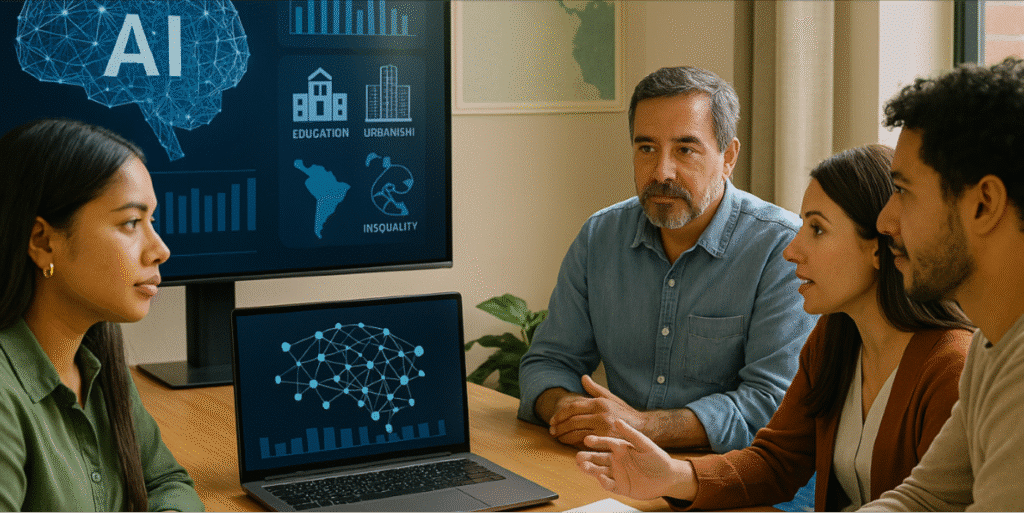
The false dilemma: fully automated vs fully manual
In an increasingly digital world, many companies face a key question:
Should we automate everything or continue relying on human intervention?
Both extremes can fail without the right strategy.
Automating without oversight can lead to chaos, while keeping 100% manual workflows slows everything down and drives up costs.
The smartest answer lies in the middle: hybrid automation
A model where AI handles repetitive tasks while humans provide judgment, empathy, and decision-making.
This approach isn’t about replacing people; it’s about freeing them from routine operations so they can focus on strategy.
What is hybrid automation?
Hybrid automation combines artificial intelligence (AI), process automation (RPA or no-code), and human supervision in a single workflow.
Its goal isn’t to eliminate steps, but to redesign how they’re executed—ensuring speed, accuracy, and control.
A typical example:
AI automatically classifies incoming requests or emails.
A human reviews exceptional or sensitive cases, adds context, and validates the action.
The system learns from those human decisions, improving over time.
This design creates living processes, where every iteration makes the system smarter and more reliable.
Why companies are choosing hybrid models
- Precision without losing empathy
AI can analyze data and detect patterns—but it doesn’t understand emotions or social context.
A hybrid model maintains algorithmic efficiency while preserving human sensitivity.
- Scalable, controlled growth
“Human-in-the-loop” automation ensures that processes continue working even when business rules change or exceptions arise.
- Traceability and accountability
Human oversight guarantees transparency and compliance—essential in sectors like finance, healthcare, or customer service.
- Continuous learning
Every human validation feeds back into the system, helping it improve. The company gains digital maturity without becoming overly dependent on AI.
How to design an effective hybrid automation
At Lab9, we help companies scale productivity without losing control. These are the key principles we apply in intelligent automation projects:
1. Map processes and identify critical points
Before automating, analyze workflows to spot repetitive tasks, frequent errors, and bottlenecks. Not everything should be automated—only what brings real efficiency.
2. Define clear human roles
Each flow needs a responsible person to oversee, approve, or intervene when the AI lacks context. Governance is key to avoiding incorrect automated decisions.
3. Use integrated AI + no-code tools
Platforms like Make, Zapier, ChatGPT API, or Google Vertex AI connect systems, automate flows, and add manual review modules without complex coding.
4. Measure and continuously adjust
Hybrid automation isn’t “set and forget.” It requires constant monitoring of outcomes, efficiency, and detected errors to keep improving.
Real-world examples of hybrid automation
- Customer service: Chatbots handle FAQs and escalate sensitive cases to human agents.
- Finance: AI reconciles invoices automatically, while humans review exceptions or discrepancies.
- HR: Recruitment workflows use AI for pre-screening and humans for final interviews.
- Marketing: Automated campaigns detect emotional responses and trigger human reviews for critical messages.
Each case combines machine speed with human judgment—the perfect balance for scaling without losing quality.
The strategic value behind hybrid automation
Hybrid automation isn’t just a technical solution—it’s a management philosophy.
It builds more resilient organizations, with processes that learn, adapt, and grow.
While AI handles the data, people can focus on innovation, strategy, and creativity—the true sources of competitive advantage.
In a future where artificial intelligence becomes omnipresent, the companies that master this balance—automation with purpose and humanity with method—will be the ones that stand out.

A closing thought: “To automate doesn’t mean turning off human judgment—it means using technology to amplify it.”
👉 At Lab9, we help businesses design hybrid ecosystems of automation + AI, where technology delivers speed and humans make intelligent decisions.
Want to scale without losing control? [Contact us today] or explore our service of intelligent and collaborative transformation
